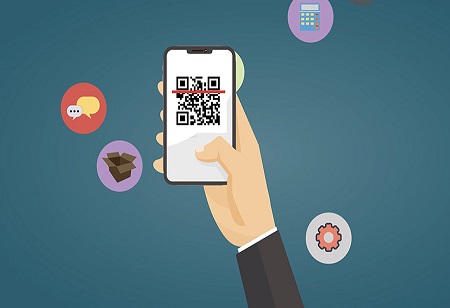With e-commerce taking the lead in India, customers are bombarded with the possibility of being impacted by counterfeiting, which has always been an issue for companies. GOI is attempting to enact stringent regulations and actions, as well as urge firms to employ
anti-counterfeit packaging. Yet the marketplaces remain swamped with undetectable counterfeits. According to the World Customs Organization, counterfeit products generate over $650 billion in revenue each year.
To stay ahead of the counterfeiting circumstances, manufacturers are putting numerous advanced technologies like — Radio frequency identification tags (RFIDs) equipped with microchips, Security Seals, Barcodes, Security Ink & Printing, Smart Labels and Holograms, Mass Encoding, Digital Encryption & Serialization, and more into packaging.
In this article, let's explore the key trending technologies that will shape the future of the anti-counterfeit packaging segment of India.
Radio frequency identification tags
In the days ahead, Radio-frequency identification (RFID) will be used to give a simple way to retrieve information, track pharmaceuticals or commodities in the supply chain, and prevent the expenses associated with counterfeit or contaminated prescriptions. RFID (Radio Frequency Identification) is a technology that employs radio waves to monitor people or items and correlate programmed information with them. When an RFID-tagged item passes through the field of vision of a reader, the antenna transmits a unique data code as the information is transferred from the tag to the reader or vice versa.
As an active RFID is always transmitting a signal, it's a great solution for those who need real-time tracking, such as in tolling and real-time vehicle tracking applications.However, they are a expensive products, but they do have a large read range, which may be preferable in some cases.
Passive RFID tags on the other hand are a common choice for supply chain management, race tracking, file management, and access control applications because of their low cost. While a passive RFID tag does not require a direct line of sight to the RFID reader, its read range is substantially lower than an active RFID tag. They are tiny, light, and have the potential to endure a lifetime.
Implementation of BlockChain
In the future, firms and end-users will be able to verify the legitimacy of items in their hands, thanks to the usage of blockchain technology. They might obtain access to the whole product lifecycle, from raw ingredients to the retail shelf, by scanning the product label or QR code.
The distinction between blockchain and previous technology is stark. Food and beverage firms, for example, would aim to monitor and audit their suppliers and implement quality control systems across the supply chain. Despite these measures, protecting against illicit behaviour remained difficult. Fake food and wine continue to be a problem. Illegal alcohol may account for more than 20% of the market, according to estimates.
This is something that blockchain technology has the capacity to fix. When everyone in the supply chain uploads information about a product, it is permanently saved in the blockchain network. Unlike traditional software-based tracking solutions, the blockchain network is not controlled by anybody. Instead, data is stored in a distributed database that is shared by hundreds or thousands of nodes. Each piece of data is uniquely encrypted. So, if someone wants to make a modification, they must persuade the rest of the network's nodes to agree, which fraudsters would find impossible.
3D pattern smart labels
In the automobile business, counterfeit items are common and have a substantial influence on the safety of different car parts, such as lubrication systems and spare parts. Manual examinations might be difficult to discern between counterfeit and real items. Consumers can verify product authenticity by attaching encrypted tags or labels to the packaging. This is why packaging start-ups use 3D patterns, QR codes, and other technologies to create coded labels and tags.
LetsVeriFy, an Indian business, provides anti-counterfeit packaging solutions for the automotive industry. Brands may utilize the startup's patented technology to create unclonable 3D pattern smart labels. Each label has its own QR and 3D pattern, which may be used for pre- and post-shopping verification. The startup's mobile app analyzes these labels to ensure that the goods are genuine and report fake products.
The Future
As the digital world advances, interactive customer interaction via smartphones is allowing firms to engage in direct-to-consumer marketing and combat counterfeiting. Digital packaging solutions will promote psychological, creative, and physical consumer experiences in the future. With these technologies, businesses may engage people in more dynamic connections with their products and brands. Digital packaging enhances conversion rates by a factor of ten, in addition to producing a strong feeling of excitement and wonder to enhance the buyer's experience.
One of the most significant advancements in digital packaging is the growing use of "near field communication," or NFC technology. When two digital devices are held together or touched, short-range magnetic induction allows for immediate data transmission.
